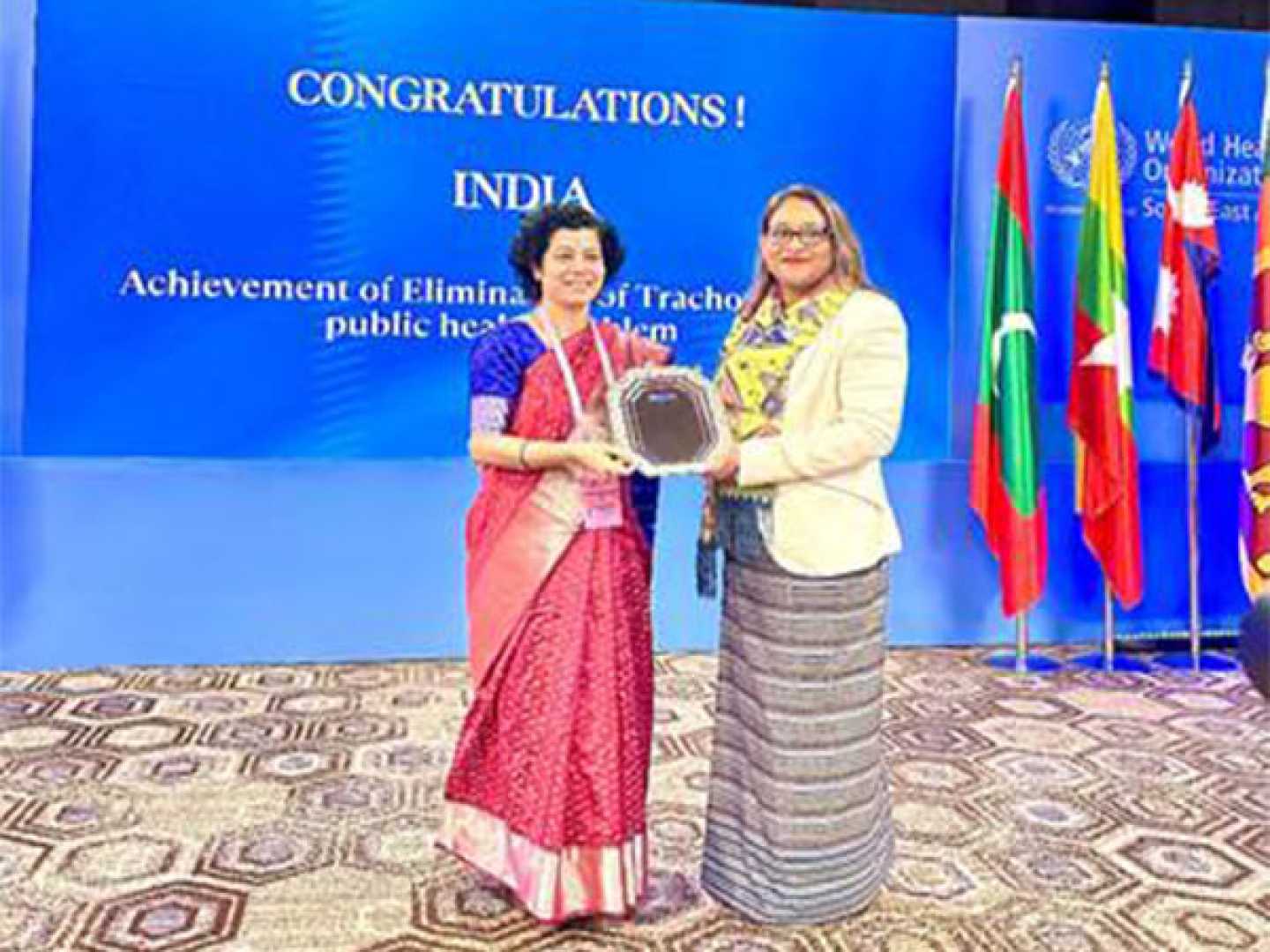News
India Eliminates Trachoma as a Public Health Problem

The World Health Organization (WHO) has officially recognized India for eliminating trachoma, a leading cause of blindness worldwide, as a public health problem. “India’s elimination of trachoma as a public health problem is a testimony to the country’s commitment to alleviating the suffering that millions have faced from this debilitating disease,” stated Dr. Tedros Adhanom Ghebreyesus, WHO Director-General. “WHO has worked closely with India to achieve this milestone, and we congratulate the government, health workers, and partners who have collaborated to make it possible.”
Ms. Aradhana Patnaik, Additional Secretary and Director of the National Health Mission within the Ministry of Health and Family Welfare of India, and Ms. Saima Wazed, Regional Director of WHO South-East Asia Region, were among the notable figures recognizing this achievement. India joins Nepal and Myanmar in the WHO South-East Asia Region, along with 19 other countries globally, that have previously met this target.
Despite being preventable, trachoma remains a severe health threat in 39 countries and continues to affect approximately 1.9 million people with blindness worldwide. India’s journey towards eradicating trachoma began in 1963 with support from WHO and UNICEF, focusing on community-based interventions including surgical treatment, antibiotic therapy, and improvements in water, sanitation, and hygiene (WASH), coupled with health education to promote behavior change.
The National Program for Control of Blindness and Visual Impairment (NPCBVI) initiated in 1976 further integrated trachoma eradication efforts. “India’s success is due to the strong leadership of its Government and the commitment of ophthalmologists and healthcare workers,” said Saima Wazed during congratulatory remarks at the Seventy-Seventh Session of the WHO Regional Committee for South-East Asia.
Statistics indicate a dramatic decline in trachoma prevalence in India from 4% of all blindness cases in 2005 to just 0.008% by 2018. Thorough validation processes in 2024 confirmed that elimination targets were met in all previously affected regions, resulting in WHO’s validation of India’s achievements.
Dr. Roderico H. Ofrin, WHO Representative to India, stated, “Congratulations to India on achieving certification for trachoma elimination as a public health problem. This milestone results from strong leadership and many years of efforts at the national and state levels.” The implementation of the SAFE strategy, which includes surgery and drug administration, contributed to this success.
Trachoma is an eye disease caused by the bacterium Chlamydia trachomatis, spreading through contact with infected individuals’ discharge or environmental factors. Recurrent infections can lead to trachomatous trichiasis, which can cause blindness if untreated.
Globally, India is part of a group that includes Benin, Cambodia, and Ethiopia, among others, recognized for eliminating trachoma as a public health challenge. The WHO’s current roadmap seeks to prevent, control, and eradicate 21 neglected tropical diseases by 2030, with trachoma being a key focus.












